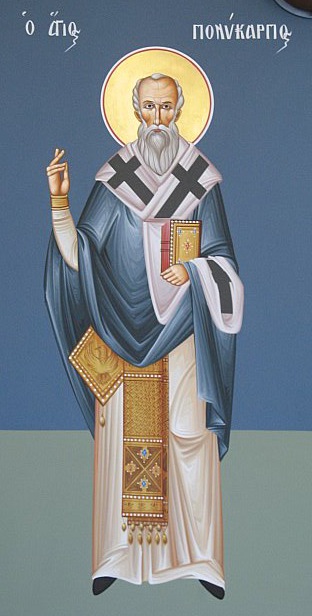Friday Frivolity: Christians are a weird bunch…

(FYI – Church of Christ don’t use musical instruments)
"We are travellers…not yet in our native land" – St. Augustine

(FYI – Church of Christ don’t use musical instruments)
As you know, I write my blog entries a while before they actually get posted. Since writing this entry I have found better ways of achieving the desired effect using WordPress Plug-ins. However, I decided to post it anyway since I think it’s still quite a neat exercise in tricking computers to do what you want…
Today is purely a technical blog for my fellow bloggers.
I’ve had a problem that has been bugging me for some time. If I post a link to a blog entry on Facebook which contains no images, then no thumbnail image is displayed:
I’ve noticed that when I don’t have a thumbnail image, the web traffic generated by people visiting my blog from Facebook seriously declines.
This is particularly problematic for my “Friday Frivolity” posts. Since these entries are usually just a few lines of text and a YouTube video, they have no thumbnails when shared on Facebook.
Tonight, I found a fairly simple solution to this problem…
I was looking at my post from a couple of days ago and noticed something about the icon of Polycarp that I didn’t initially notice…
If you look carefully, you will see on the left the emblem of a bird, peaking out from underneath Polycarp’s robes. I believe this bird is the Phoenix. If you don’t know the mythology surrounding the Phoenix, it is described in the letter of St. Clement of Rome to the Corinthians (96 AD):
“Let us consider that wonderful sign [of the resurrection] which takes place in Eastern lands, that is, in Arabia and the countries round about. There is a certain bird which is called a phoenix. This is the only one of its kind, and lives five hundred years.
There are many words of Jesus to which I find myself returning time and again, finding in them yet another dimension οr shade of meaning. Today I would like to share with you a little “God moment” I had last week related to a certain passage of Scripture.
 Recently, I had a few days vacation in Las Vegas. A friend of mine from England was visiting Arizona and we agreed to meet in Las Vegas since it’s sort-of-but-not-really half way between Phoenix and San Diego. This was my first time visiting Las Vegas. Hopefully I’ll write about my impressions of that city sometime soon but, for now, I would just like to share something that happened on the last day.
Recently, I had a few days vacation in Las Vegas. A friend of mine from England was visiting Arizona and we agreed to meet in Las Vegas since it’s sort-of-but-not-really half way between Phoenix and San Diego. This was my first time visiting Las Vegas. Hopefully I’ll write about my impressions of that city sometime soon but, for now, I would just like to share something that happened on the last day.
Now, I’m pretty sure Hell will be hotter than Nevada, although I don’t exactly see how that’s possible! Man, it was baking! Since the weather was like an oven, we decided to take it easy on our final day and just hang out at the hotel’s pool for a little while…
While I was sunbathing I saw a father and his little girl playing in the pool. The child would climb out of the pool and, with a huge grin and cheeky laugh, she would jump into the pool, into the parent’s waiting arms.

This should automatically appear in Facebook…
It should have a smiley face in the preview icon…
Comments in Facebook should automatically appear here…
Clicking on the link in Facebook should take you to this page, rather than the Facebook application.
Yesterday I outlined the various parallels which can be found between Jesus’ Passion and Polycarp’s Martyrdom. I ended the entry by asking:
“But what does this all mean? Why are there these similarities between the deaths of Jesus and Polycarp?”
The martyrdom account itself ascribes these similarities to the providence of God:
“By almost every step that led up to Polycarp’s martyrdom, the Lord intended to show us anew the type of martyrdom narrated in the Gospel…” – Mart. Pol., 1.1
But that then raises the question: why might God wish to present to His Church a death like that of Christ?
 In the introduction to the Martyrdom of Polycarp, the author tells us that “By almost every step that led up to Polycarp’s martyrdom, the Lord intended to show us anew the type of martyrdom narrated in the Gospel” (Mart. Pol 2.1).
In the introduction to the Martyrdom of Polycarp, the author tells us that “By almost every step that led up to Polycarp’s martyrdom, the Lord intended to show us anew the type of martyrdom narrated in the Gospel” (Mart. Pol 2.1).
We’re currently working our way through this martyrdom account in the JP2 Group so I thought I’d put together a post highlighting all the parallels I’ve found between Jesus’ death and Polycarp’s witness (martyrdom) to his Lord.
The full text and audio of the Martyrdom is available here.
Some of these parallels are much stronger than others (I put a star rating next to each one of them). In many ways, the fact that there are many inexact parallels actually adds to the credibility of the martyrdom account. Were it fabricated, one would expect the parallels to be “tidied up” a bit more and closer to that of our account of Jesus’ Passion.
Both foretold their deaths (Rating: *****)
In the Martyrdom of Polycarp, after seeing a vision of his pillow aflame, Polycarp turns to his companions and states “I must be burnt alive” (Mart. Pol 5.2). Jesus, likewise, foretold his own death saying “We are going up to Jerusalem, and [I] will be delivered over to the chief priests and the teachers of the law. They will…hand [me] over to the Gentiles to be mocked and flogged and crucified” (Matt 20:18-19).
Both were betrayed (Rating: **)
Jesus was betrayed, of course, by Judas (Matt. 26:15). The author of the Martyrdom points out that “those who betrayed [Polycarp] were of his own household” and directly compares the betrayer to Judas (Mart. Pol 6.2). Both betrayers accompany the arresting party. However, I can’t help but think that this comparison is a little unfair. Polycarp’s betrayal was neither malicious nor for profit. The slave didn’t reveal Polycarp’s location until he had suffered abuse at the hands of the policemen. In fact, you might call this a “tortured” parallel…
Both begin in an upper room (Rating: *)
When the police arrive for Polycarp he’s in the “upper room of a certain little house” (Mart. Pol. 7.1). Jesus’ Passion was preceded by the Last Supper held also in an Upper Room (Luke 22:12).